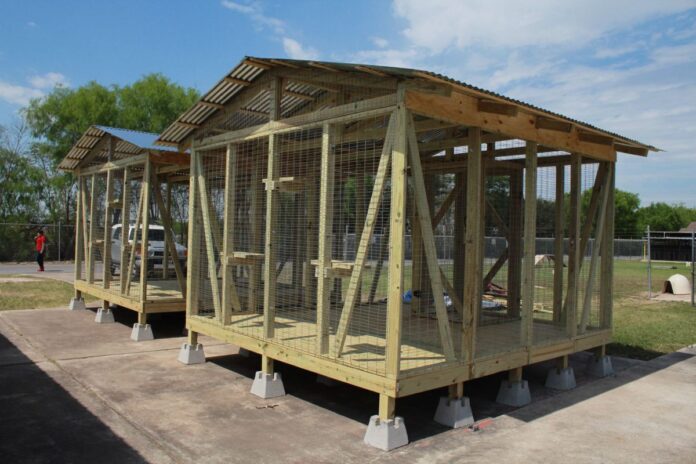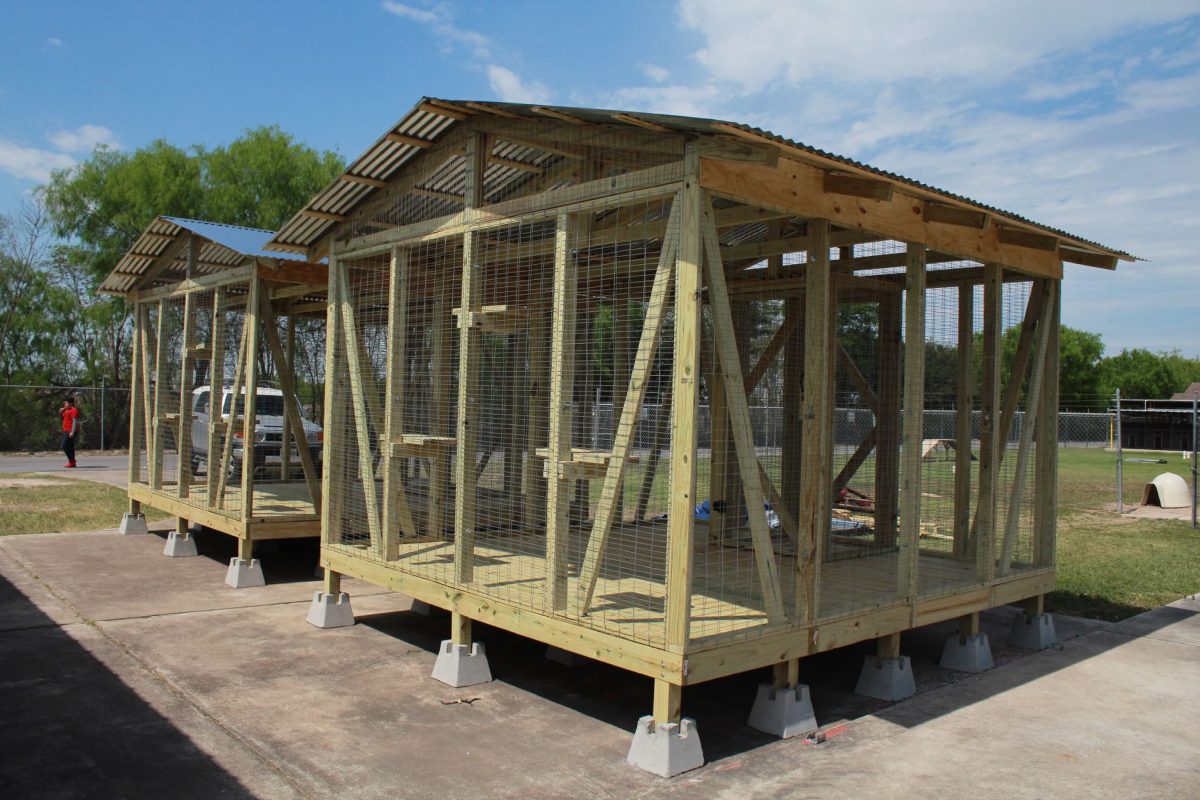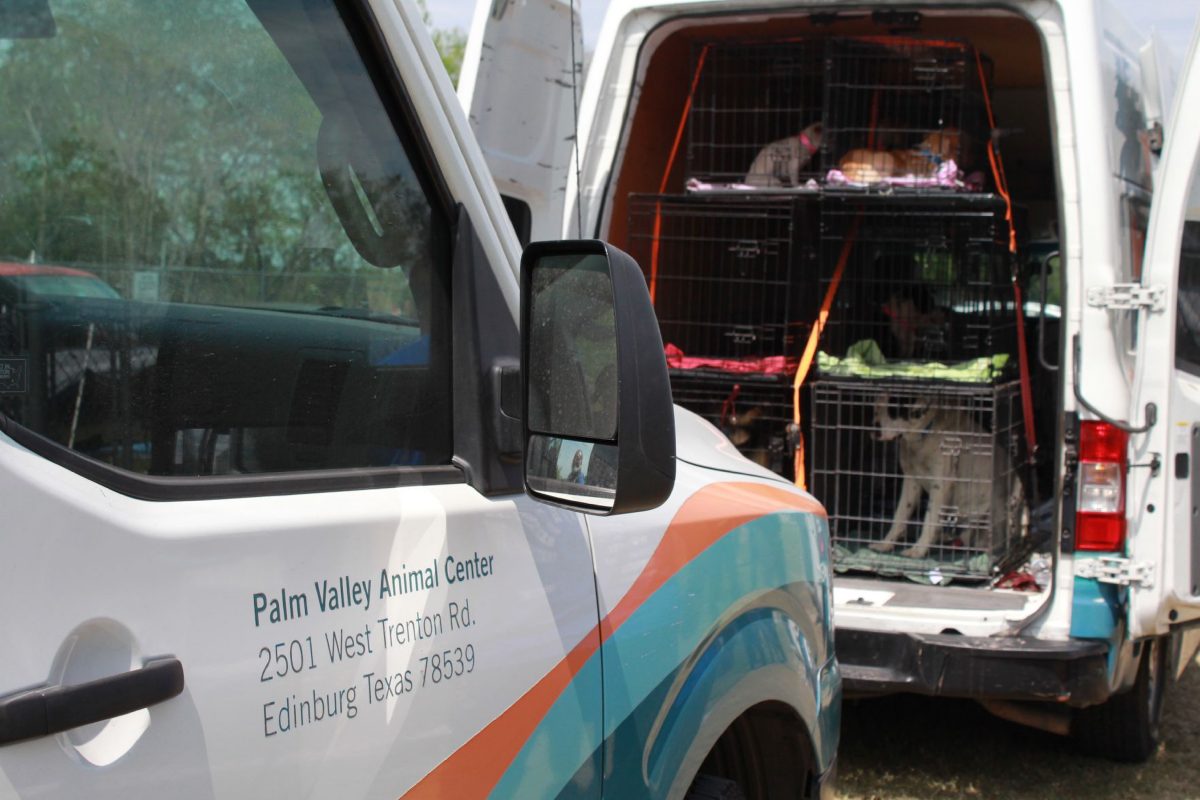EDINBURG — Just days after the overwhelmed animal shelter here had been at full capacity, Rebeca Villanueva reported, in somewhat disbelief, that there was not a single cat housed in the facility.
“I never thought I’d be able to say that,” the director of development at Palm Valley Animal Center said Monday afternoon.
More than half of the animals that were in the shelter two days ago are in temporary or permanent homes. Starting Sunday, the shelter began waiving adoption fees and asking the community to take in one of its animals for four days while an internal restructuring takes place.
Following a month of widespread online criticism, the shelter is upgrading intake methods with the help of Austin Pets Alive!, Best Friends Animal Society and Maddie’s Fund.
“Besides the negative stuff, what we heard was there is a problem and somebody has to offer up solutions,” she said, adding that on Sunday alone they put 70 dogs in temporary homes. “These are solutions. This is how our community can help: you can adopt, or you can take a dog home for four days. If we could get that every day, that would make a huge difference on the care we can give the animals.”
Most of the changes focus on the way animals are taken and separated once they arrive at the shelter.
New wooden catios (large, wooden outdoor enclosures) meant to house “community cats,” or cats that have not been domesticated, are also being installed at PVAC.
In addition, the center is kicking off their barn cat program, where they’ll place such cats in ranches and farms where they can roam free and hunt rodents.
The shelter’s recurring problem continues to be a lack of funds, Villanueva said.
“Oftentimes, we don’t get donations for operation costs, but that’s what keeps an organization running,” she said, adding that a lot of their staff has been working overtime the past few days.
Ellen Jefferson, executive director of Austin Pets Alive! said most shelters lack adequate funds, but PVAC has a unique need considering its size. One of the things they’re supporting the shelter with is helping them develop a new fundraising strategy.
“They’re severely underfunded and understaffed,” Jefferson said. “I think that most communities don’t know what the norm is for an animal shelter but this shelter is underfunded at about an eighth of what it should be.”
PVAC is a 501(c)3 nonprofit that currently has contracts with 14 municipalities. The cities used to pay a per-animal fee, which PVAC recently renegotiated to a custom flat-fee for each respective municipality.
“Basically, they’re paid to kill them,” Jefferson said of the money received from local contracts. “That’s a very easy and low labor job. What we’re trying to do is turn it into a life-saving facility, which is very high labor and labor intensive, but right now they don’t have the funding to do that. They only have the funding to kill them.”
In May 2016 the shelter opened the Laurie P. Andrews PAWS Center, and adoptions out of PVAC ceased. The roughly $3.2 million facility’s main purpose is to educate the public on how to be responsible pet owners, with the hope that eventually it will help lower the amount of animals that find their way into PVAC.
However, Lee Ann Shenefiel, chief animal services officer for the city of Austin, said community education issues aren’t necessarily specific to the Valley. The way a shelter treats its animals can eventually reflect on to the community, she said.
“We certainly have some of those issues,” she said. “You can’t always control what happens in your community but you can control what happens in your shelter. So if the killing is happening in the shelter, then you start to fix what is happening in the shelter and engage your community in that life-saving effort. That’s part of how you start creating the behaviors you want to see in the community rather than trying to tackle all of the animal issues at once.”






